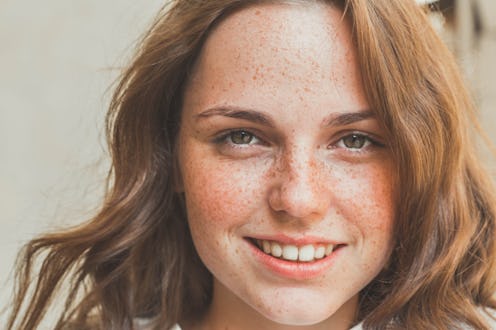Fashion
6 Skincare Ingredients You Should Probably Avoid

If "Phthalates" sounds like some sort of scary version of Pilates to you, you’re not alone. When it comes to figuring out healthy skincare ingredients, it’s a nightmare to try and determine what these long-winded terms actually mean. The ingredients might as well be written in another language. I mean, can you tell me which of these are ingredients and which are names of dinosaurs? A: Triclosan. B: Tocopherol. C: Aardonyx. D: Paralititan.
Answers: A and B are skincare ingredients and C and D are dinosaurs.
Unless you’re an archaeologist or chemist, this little experiment probably confused you whilst simultaneously convincing you that your skincare ingredient knowledge game is lacking. But no worries — that’s why I'm here!
Reading the back of a skincare product label can be daunting (it might as well be writing in Latin). After college, I had to rethink my skincare routine — the stress of having to be a real grown up totally messed with my skin — and I had to do a lot of research in order to get my skin back to normal. Throughout said research, I came across numerous reviews and testimonials regarding "miracle" treatments, all natural oils, microdermabrasion and chemical peels. The more research I did, the more I came to realize that everyone’s skin is so drastically different that what works for one person will not work for everyone else. I had to really get to know my skin, listen to it, and treat it accordingly. That’s when I started to research ingredients. I wanted to be sure of everything that I was putting on my face without marketing ploys getting in my way.
Even with studying and thorough research, I still don’t really know all the scientific names used in skincare ingredients. That being said, I found that it was much easier to remember what to avoid. This way, when you're scanning the ingredients list on a product, you can spot the red flags rather than trying to understand everything that goes into the product.
So without further ado, here’s a somewhat exhaustive list of skincare ingredients you should avoid:
1. Triclosan
This is an ingredient, not a dinosaur, just FYI. It’s used mostly in acne products and antibacterial cosmetics such as deodorants, cleansers and toothpastes. But consumers should beware: This ingredient can actually cause bacteria resistance — meaning antibiotic-resistant bacteria can be created and flourish. Eep!
2. Siloxanes
Be on the lookout for ingredients ending in “-siloxane” and “-methicone!” This ingredient is used in cosmetic products to soften, smooth, and moisten your skin. But while it might make your skin feel good, the same ingredient is used in water-repelling windshield coating, building sealants and lubricants. So do you really want to put that on your face? Need another reason to stop using Siloxanes? They're unfriendly to the environment and harmful to biological diversity, yuck!
3. Synthetic Parfum (Fragrance)
Who doesn’t love a nice smelling lotion or face cream? But while your senses might be thanking you, your skin probably isn't doing the same. Some fragrances may trigger asthma or allergies and can be linked to cancer. And an artificial fragrance can contain hundreds of synthetic chemicals — companies are not required to disclose what those chemicals might be.
4. Parabens
This one is a tricky one. There’s no direct evidence that Parabens are bad for you. They're used as preservatives in many cosmetic products, but there exists speculation that they might interfere with male reproductive functions. Although this has yet to be confirmed with studies, I personally wouldn’t risk it. Parabens have also been found to weakly mimic estrogen in animal studies — which is a concern due to the link between hormonal estrogen and breast cancer. So again, I personally wouldn’t risk it.
5. Formaldehyde-Releasing Preservatives
Just reading the name should immediately make you turn away, but in the event that it doesn't, please continue reading. These preservatives are safe to use in small quantities at concentrations of 5 percent or less (as in nail hardeners), 0.1 percent for oral cosmetics and 0.2 percent for non-oral cosmetics. Just be sure to double check the concentration level before applying anything to your face!
6. SLS (Sodium Lauryl Sulfate)
SLS is often used as a cleansing and foaming agent in products like shampoo, bath soaps, shaving creams and skin cleansers. At high levels, SLS can irritate skin or eyes in some individuals. It’s been agreed that in small amounts and for short periods SLS and SLES are okay for your skin, but prolonged contact may cause irritation. Worth keeping that one in mind!
Although this isn't an exhaustive list of all the skincare ingredients under the sun, I really hope it helps shed some light onto the topic and pushes you into becoming more aware of what you're putting on that face.
Images: Fotolia; Getty; Giphy